Stop me if you’ve heard this one before: it’s an icy winter night in your RV, and you’re looking to warm up by your furnace. You go to turn it on, only to be greeted by a blast of freezing-cold air! What gives?
It’s a common issue faced by many RV owners, but it can be fixed.
An RV furnace blowing cold air may be due to a lack of fuel or ignition, an issue with the sail switch, or a malfunctioning blower motor or electrical connection.
In this article, we’ll explore some of the most likely causes and solutions to help you get your furnace back to generating warmth in no time.
First, it’s essential to understand that your RV furnace requires a combination of fuel, electronics, and various sensors and relays to function properly. When any of these components fail, it could result in cold air being produced by your furnace. Don’t worry; with the right knowledge and some simple troubleshooting, you’ll be able to identify the problem and get your furnace up and running again.
In the next sections, we’ll walk you through how to diagnose and address issues with your RV furnace, such as a faulty sail switch, gas valve, or ignition problems. By the end of this article, you’ll have a better understanding of why your RV furnace is blowing cold air and how to fix it.
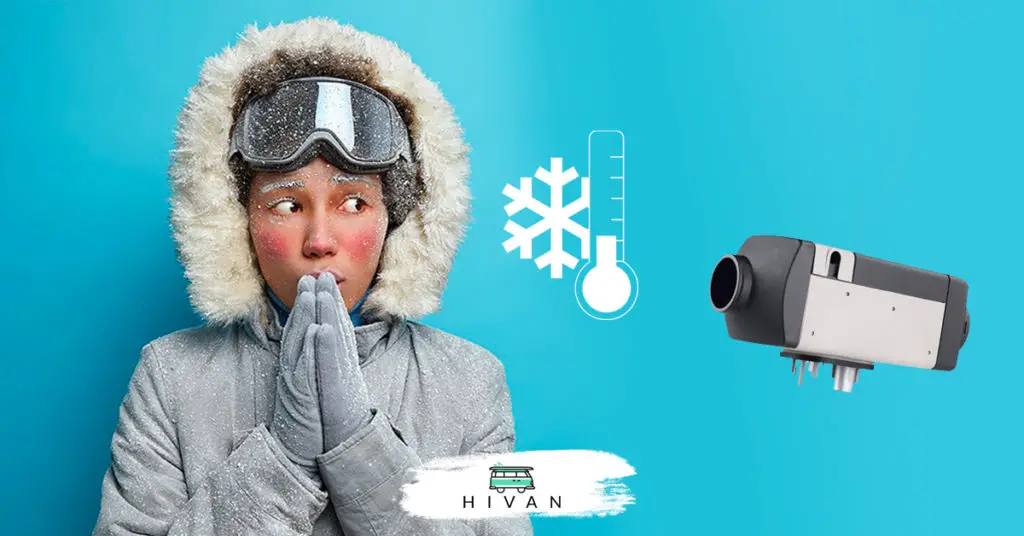
Common Reasons for RV Furnace Blowing Cold Air
Thermostat Issues
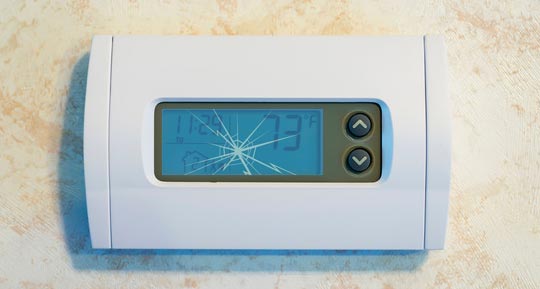
One common reason your RV furnace is blowing cold air could be thermostat-related. If your thermostat is set too low or is malfunctioning, it may not signal your furnace to heat the air. To fix this issue, try adjusting the thermostat settings, and if that doesn’t work, consider replacing the batteries or the thermostat itself.
Sail Switch Malfunction
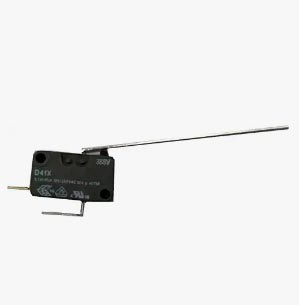
A sail switch is a safety component used in different airflow and heating systems. Your RV furnace has a sail switch because a sail switch can avoid a potentially fatal fire hazard. The sail switch detects if enough air is blowing through the furnace before propane is released.
This prevents the furnace from igniting if there is not enough airflow to support it. Without the sail switch, the furnace would be prone to igniting without any proper airflow whatsoever, which could easily lead to the RV catching fire!
Ignitor Problems
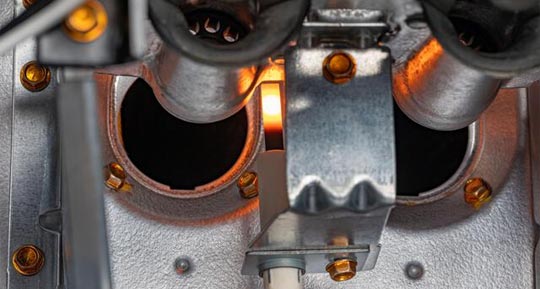
Ignitor issues can also cause your RV furnace to blow cold air. Your ignitor might be dirty, corroded, or broken. To troubleshoot, inspect the ignition system and clean or replace components as needed.
Gas Valve Troubles

The gas valve ensures that propane flows into your RV furnace. If it’s clogged or damaged, the furnace won’t heat the air. Check for debris or damage around the valve and gas supply, and clean or replace components as necessary.
Circuit Board Issues
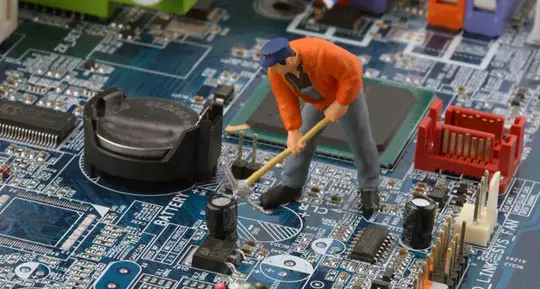
Your RV furnace’s circuit board might be causing cold air to blow. It could be due to a loose connection or a damaged component. Inspect the circuit board, look for any damages, and consider replacing it if necessary.
Low Propane Levels

Finally, low propane levels can cause your furnace to blow cold air. If your propane tank is empty or low, your furnace won’t have enough fuel to generate heat. Make sure your propane tanks are full and that the tank valve is properly opened.
Related Article:
– How dangerous is it to drive RV with propane on?
Troubleshooting and Diagnosing RV Furnace Issues
When your RV furnace is blowing cold air, a few common issues could be the culprit. In this section, we’ll cover some essential steps to help you diagnose and troubleshoot these problems.
Inspecting the Thermostat
The thermostat is crucial in controlling your RV furnace’s heating system. Ensure your thermostat is set to the correct temperature and has a sufficient power supply, as a low battery can cause issues. If needed, replace the battery or check the power source to ensure proper functionality.
Here’s a great thermostat from Dometic:
Easy to install wall-mounted thermostats control heating and cooling systems from one location.
Checking the Sail Switch
The sail switch is a safety device that detects proper airflow in the furnace. If it is not functioning correctly, it may prevent the furnace from igniting. To troubleshoot, inspect the sail switch for signs of dirt or damage. Clean if necessary, and if it is still not working properly, consider replacing it.
If your sail switch has anything that could block it from being opened or closed, the furnace will not release propane and properly ignite. Examples of things that can block a sail switch include dirt, dust, mud, cobwebs, and insect nests. If you’re keeping a pet around your RV, their hair and fur can also get into the area directly behind the sail switch.
The video below from My RV Works, Inc. on YouTube shows the process of checking and cleaning a dirty sail switch of a furnace. I recommend giving it a watch.
Testing the Ignitor
The ignitor is responsible for lighting the propane in your RV furnace. To verify its effectiveness, inspect the ignitor for signs of damage or excessive wear. If the ignitor appears damaged, it may need to be replaced to restore proper heating function.
Examining the Gas Valve
The gas valve ensures propane flows correctly to the furnace. Checking the gas valve involves inspecting the propane source and ensuring that your propane tank is not empty. If the propane supply is adequate, the gas valve might be faulty or obstructed, requiring cleaning or replacement.
Assessing the Circuit Board
Your RV furnace’s circuit board controls the electronic components, including relays and fan motor. If the furnace is still blowing cold air after inspecting other components, it’s time to evaluate the circuit board. Inspect for any visible damage, and consider calling a professional for further testing and potential replacement.
Remember that diagnosing and troubleshooting your RV furnace issues can be a complex process. Be patient, and consult your owner’s manual or a professional technician if you encounter any difficulties. Proper care and maintenance will ensure your furnace keeps you warm and comfortable during your RV adventures.
Here’s a great video that shows you how you can troubleshoot an Atwood RV furnace circuit board:
Related Guides:
– Can you run your RV furnace on 15 amp?
– Do RV furnaces have a fuse?
Maintenance and Cleaning for RV Furnaces
Regular maintenance and cleaning are essential for ensuring that your RV furnace functions efficiently and safely. By keeping the furnace clean, you can avoid problems such as your RV furnace blowing cold air. In this section, we’ll cover various maintenance tasks, including cleaning the vents and blower, clearing the combustion chamber, inspecting the heat exchanger, checking the propane supply, and changing the air filter.
Cleaning the Vents and Blower
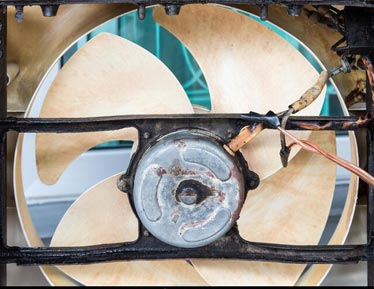
Over time, dirt and grime may accumulate in your RV furnace’s vents and blower, affecting airflow and reducing its heating capabilities. To clean the vents, use a vacuum cleaner with a brush attachment to remove dust and debris. For the blower, turn off the furnace and remove the blower motor’s housing. Use a brush or canned air to clean the fan blades, and wipe down the motor with a damp cloth.
Clearing the Combustion Chamber
A dirty combustion chamber can cause incomplete combustion, leading to your RV furnace blowing cold air. To clean the combustion chamber, first, shut off the propane supply and disconnect the power. Remove the furnace cover and locate the combustion chamber. Brush off any soot or debris and then use a shop vacuum to remove any remaining dirt. Reassemble the furnace and re-establish the propane and power connections.
Inspecting the Heat Exchanger
A damaged or corroded heat exchanger can significantly impact your RV furnace’s heating efficiency. To inspect the heat exchanger, turn off the furnace and remove the cover. Look for signs of rust, cracks, or other damage on the heat exchanger’s surface. If you notice any issues, consult a professional technician to assess the damage and determine if a repair or replacement is necessary.
Checking the Propane Supply
A low propane supply can cause your RV furnace to blow cold air. Ensure there’s enough fuel in your propane tanks and that the tank valve is open. Inspect your propane delivery system, including hoses and regulators, for any signs of damage or obstruction. Replace damaged components as necessary.
Changing the Air Filter
A dirty air filter can reduce airflow, causing your RV furnace to work inefficiently, ultimately leading to cold air. Regularly check and change the air filter to maintain optimal performance. Refer to your RV furnace’s manual for specific instructions on when and how to replace the filter.
By maintaining and cleaning your RV furnace, you can ensure its reliable performance during winter and other times when you depend on its heating capabilities. Regular maintenance can also help you diagnose and troubleshoot problems such as your RV furnace blowing cold air, allowing you to enjoy a comfortable and safe RV experience.
When to Seek Professional Help
Sometimes, your RV furnace might blow cold air, and you may not be sure how to fix the issue yourself. In situations like these, it’s crucial to know when to seek professional help.
If you’ve already checked the basics – such as the sail switch, propane levels, and power sources – and your RV furnace is still blowing cold air, it might be time to call a professional. There are a few key signs that you should seek professional assistance:
- If you’ve noticed any leaks or damage to the heat exchanger, it’s essential to get a professional technician to inspect and repair the issue to ensure safety.
- If you come across any electrical issues, such as circuit breakers constantly tripping, it’s best to consult an expert. They can properly diagnose the problem and check if your RV furnace or generator is causing any recurring issues.
- If the issue persists even after being connected to shore power or after fully charging your batteries, a professional might need to investigate your RV’s power system.
- If your furnace starts blowing cold air in the middle of winter, it’s vital to prioritize safety and seek professional help quickly. An expert will help you identify the root of the problem and ensure you can stay warm in cold temperatures.
When it comes to troubleshooting, diagnosing, and replacing crucial components or systems within your RV furnace, it’s crucial to seek a professional’s help if you’re unsure. Trust an expert technician to help you stay safe and warm during your RV adventures.
Final Thoughts
If your RV’s furnace is blowing cold air, the root issue likely has something to do with the sail switch—a key component to keeping the van safe and sound. If the sail switch is not activating for whatever reason, the furnace of your vehicle will continue only to route cold air throughout your RV.
Thoroughly investigating both the switch and the furnace is the key to fixing your furnace and protecting yourself from any danger that might arise.


